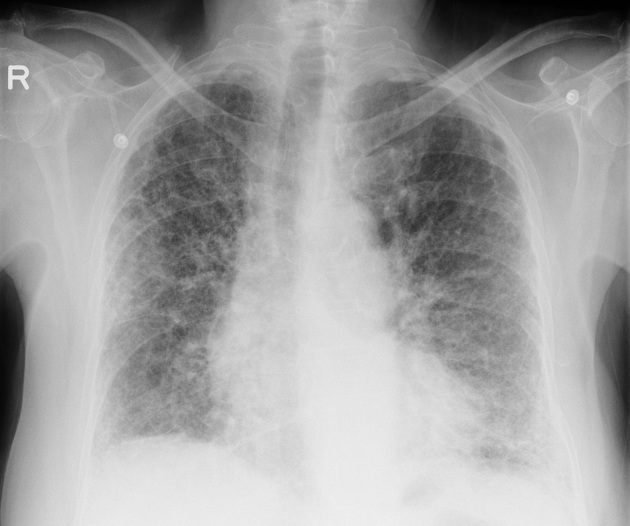Pulmonary fibrosis is a progressive lung disease characterized by the scarring and thickening of lung tissues. This scarring, known as fibrosis, makes it harder for the lungs to function properly and can result in breathing difficulties and reduced Oxygen exchange.
Causes/Factors
Pulmonary fibrosis can have various causes or factors, including:
- Idiopathic Pulmonary Fibrosis (IPF): The most common form with an unknown cause.
- Environmental Exposures: Prolonged exposure to asbestos, silica, coal dust, or other environmental irritants. Industrial dust diseases
- Autoimmune Diseases: Conditions like rheumatoid arthritis or Systemic Lupus Erythematosus can lead to lung fibrosis. Sarcoidosis
- Medications:
- Amiodarone (also causes grey/blue skin)
- Cyclophosphamide
- Methotrexate
- Nitrofurantoin
- Cryptogenic Organising pneumonia focal area of inflammation of the lung tissue. Triggered by lots of different things
- Infections: Certain lung infections can result in scarring and fibrosis.
Symptoms
Symptoms of pulmonary fibrosis can develop gradually and worsen over time:
- Shortness of Breath: Initially during exertion, later even at rest.
- Persistent Dry Cough: A chronic, dry cough that doesn’t produce mucus.
- Fatigue: Feeling tired and lacking energy.
- Weakness: Reduced physical stamina and muscle strength.
- Unexplained Weight Loss: Losing weight without intentional changes in diet or exercise.
- Chest Discomfort: Discomfort or pain in the chest.
Signs
- Crackling Sounds: Velcro-like crackling sounds (called “velcro rales”) heard during lung auscultation.
- clubbing: Thickening and rounding of the fingertips due to reduced Oxygen levels.
Diagnostic Tests
Diagnosing pulmonary fibrosis involves various tests to assess lung function and identify underlying causes:
- CXR - diffuse opacities

- Spirometry may be normal or show a restrictive pattern
- FEV1 and FVC are equally reduced
- FEV1:FVC ratio greater than 70%
- High-Resolution CT Scan (HRCT): typical “ground glass” appearance
- Lung Biopsy: A tissue sample from the lung to confirm the presence of fibrosis and determine its cause.
Management
There is currently no cure for pulmonary fibrosis, but management aims to slow disease progression and improve symptoms. Treatment options include:
- Remove or treat the underlying cause
- Home Oxygen where there is hypoxia
- Stop smoking
- Physiotherapy and pulmonary rehabilitation
- Pneumococcal and flu vaccine
- Advanced care planning and palliative care where appropriate
- Lung transplant is an option, but the risks and benefits need careful consideration
Complications/Red Flags
Complications and potential consequences of untreated pulmonary fibrosis include:
- Respiratory Failure: Advanced fibrosis can lead to severe breathing difficulties and insufficient Oxygen exchange.
- Pulmonary Essential hypertension: Increased blood pressure in the lungs due to narrowed blood vessels.
- Infections: Scarring can make the lungs more susceptible to infections.